The flag of Laos is a compelling combination of colors and symbols that beautifully encapsulate the essence of this Southeast Asian nation.
Serving as a visual narrative, the flag intertwines the country’s geographical splendor, cultural influences, and forward-looking aspirations into a single emblem that resonates with its citizens and captures the attention of onlookers worldwide.
Laos Flag
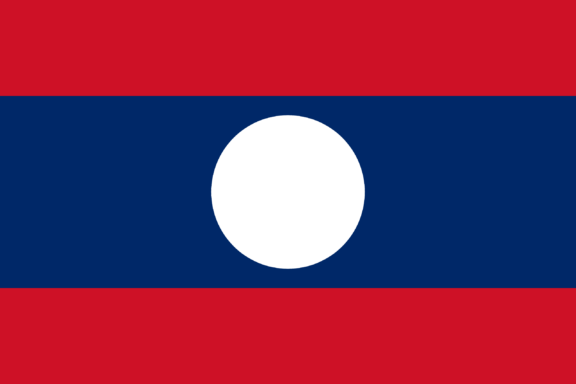
The flag of Laos consists of three horizontal stripes, with the topmost stripe being blue, the middle stripe white, and the bottom stripe red. The design avoids religious or royalist symbols, separating it from other Southeast Asian flags.
Adopted in 1945 (re-adopted in 1975), this flag vividly represents Laos, capturing the essence of the nation in a straightforward yet effective design. The flag’s layout with horizontal stripes is visually striking and aims for universal appeal, making it easily recognizable.
Laos Flag: Color Palette
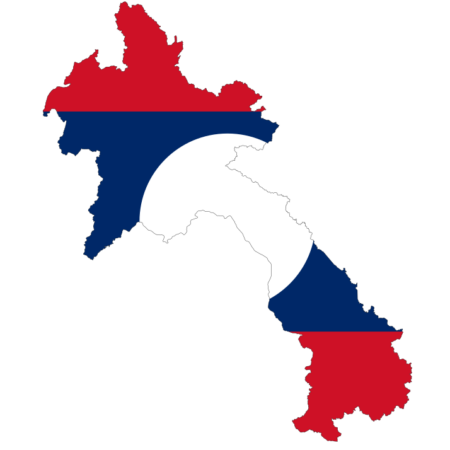
Laos Flag Emoji: 🇱🇦
The Laos flag’s color palette is bold and straightforward, featuring the primary colors of blue, white, and red. These colors are eye-catching and laden with meanings that will be explored in detail in the following segment.
The colors chosen for the Laos flag work harmoniously to create a visually balanced design. Their arrangement in horizontal stripes adds a layer of symmetry, enhancing the flag’s overall aesthetic appeal. As we delve deeper into each hue, their significance to the country’s national narrative becomes more evident.
Meaning of Each Color
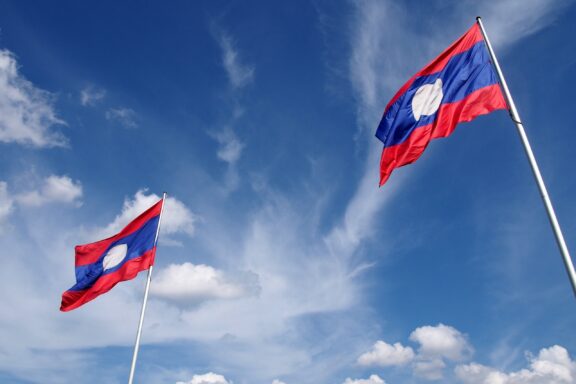
Blue
The top stripe is blue, a color that encapsulates the prosperity of Laos through its abundant natural resources like fertile landscapes and rivers. Particularly significant is the Mekong River, a critical waterway for agriculture and transportation.
In this way, blue is more than just a color on the flag; it symbolizes the nation’s rich environmental assets and their integral role in daily life.
White
The central stripe is white, representing purity and the ethical grounding of the Laotian people. White is deeply embedded in the culture and is prominently featured in religious ceremonies.
Its central placement on the flag echoes the importance of moral virtues and societal harmony, which unite the nation.
Red
The bottom stripe is red, a vivid testament to the courage and tenacity of the Laotian people. In addition to being a color of cultural significance, red honors the sacrifices made throughout Laos’s struggle for sovereignty. It thus serves as a dual symbol: one of vitality and strength and another of remembrance and respect.
Laos Coat of Arms
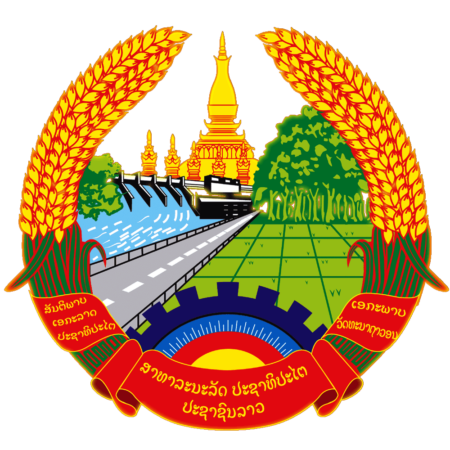
The coat of arms creates a more nuanced portrait of Laos, infusing it with religious, military, and economic symbols. The stylized stupa at the center tributes the country’s Buddhist heritage, adding a layer of spiritual significance.
Contrasting this are the crossed swords, gear wheel, and paddy fields, which collectively spotlight Laos’s commitment to safeguarding its sovereignty and its foundational economic sectors.
The emblem elaborates on aspects where the flag opts for broader thematic expressions, enhancing the overall depiction of the nation.
Historical Evolution and the Meaning Behind Changes
In the early period before 1945, the flag of the Kingdom of Luang Prabang, which eventually merged with other provinces to form the Kingdom of Laos, adorned a white three-headed elephant and a white parasol on a red field. This design was synonymous with the royal legacy of Laos, echoing its ancient title as the “Land of a Million Elephants.”
1945 marked a pivotal shift when the Lao Issara (Free Laos) government emerged. Under this banner, a new flag designed by Lao nationalist Maha Sila Viravong appeared. With its red, white, and blue horizontal stripes, this flag signaled a fresh chapter in Laos’ history.
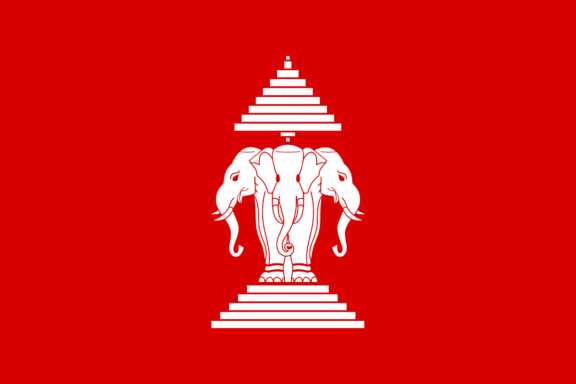
This flag symbolized the nation’s aspirations for freedom and was a departure from the royalist symbols of the past, resonating with a burgeoning desire for an independent national identity.
However, the tide turned post-1946 following the French reoccupation. The royalist flag with the three-headed elephant was reinstated and remained the emblem of Laos through the era of constitutional monarchy until 1975.
A watershed moment arrived on December 2, 1975, with the fall of the royal government and the establishment of the Lao People’s Democratic Republic. The tricolor flag of 1945 was re-adopted, symbolizing a new dawn of socialist governance.
The red stripes represented the blood shed for independence, the blue stripe symbolized the Mekong River as a source of national prosperity, and the white disk in the center stood for unity among the Lao people and the nation’s bright future.
This design, although devoid of typical communist imagery, reflected the political shift towards socialism and continues to be the emblem of Laos, epitomizing the enduring hopes and the indomitable spirit of the nation.
Overall Symbolic Meaning of the Flag
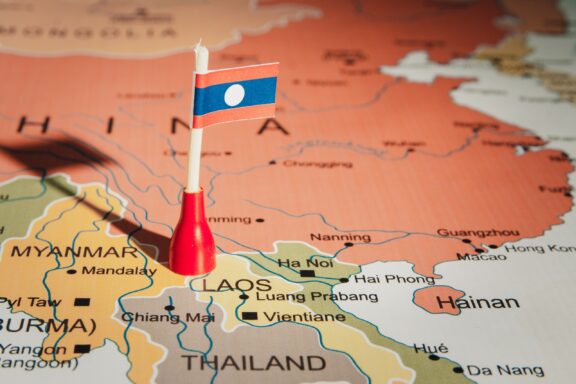
The flag of Laos serves as a potent composite of the nation’s character, philosophy, and vision. While each stripe and color has significance—natural resources, purity, and courage—when seen as a whole, the flag articulates a well-rounded narrative of what Laos represents.
It balances between respecting natural abundance, maintaining a harmonious society, and acknowledging the resilience that has carried the country through various historical challenges.
Similar Flags to the Flag of Laos
Though each country’s flag is a unique symbol of its identity, some bear striking resemblances to others, either by design or coincidence.
Below, we explore similar flags to understand how they share certain visual or thematic elements with the flag of Laos.
Thailand
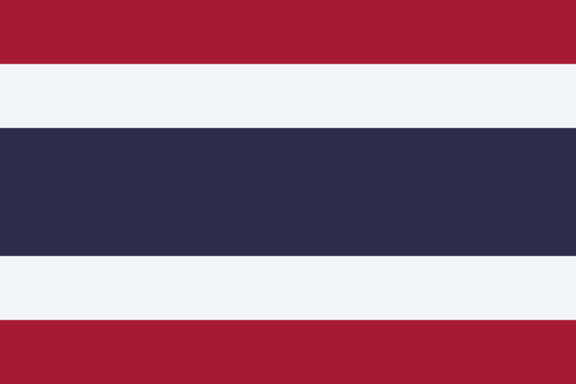
The flags of Thailand and Laos share a common historical and cultural background, being neighboring countries in Southeast Asia. Both use horizontal stripes and similar colors, like red and white, to express aspects of their national identities.
These similarities reflect the close ties and shared history between the two nations.
Costa Rica
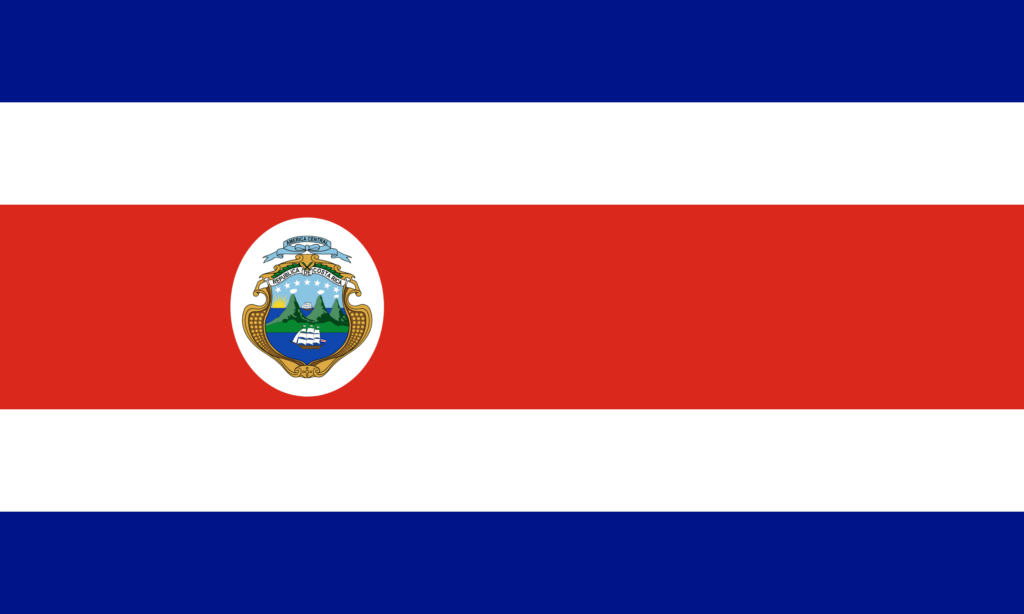
Though geographically distant from Laos, Costa Rica’s flag resembles its use of red, white, and blue horizontal stripes. Both flags incorporate these colors to signify universal themes such as courage, peace, and resourcefulness, albeit each within its own cultural and historical context.
Cambodia
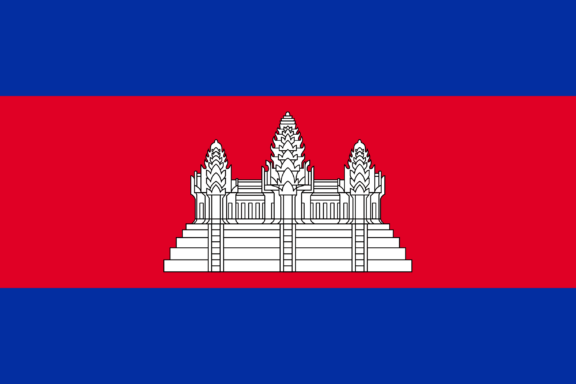
As another neighbor of Laos, Cambodia’s flag also shares some similarities, although it incorporates distinct elements like depicting Angkor Wat.
Blue and red in both flags reflect shared cultural values and histories, even if the specific symbols and arrangements differ.
Conclusion
The flag of Laos encapsulates the country’s diverse facets—from its natural wealth to its cultural values—in a straightforward design. It stands distinct among global flags while sharing nuanced similarities with a few like Thailand and Cambodia.
For Laotians, the flag is not just an emblem; it’s a unifying symbol that speaks to the nation’s unique identity.
Image Sources and Copyright Information
- Two Laos Flags Against Blue Sky with Clouds: © Takashi Images/Shutterstock
- Flag Pin on Map Indicating Laos Location: © GR.Stocks/Shutterstock